How Many Moons Does Uranus Have?
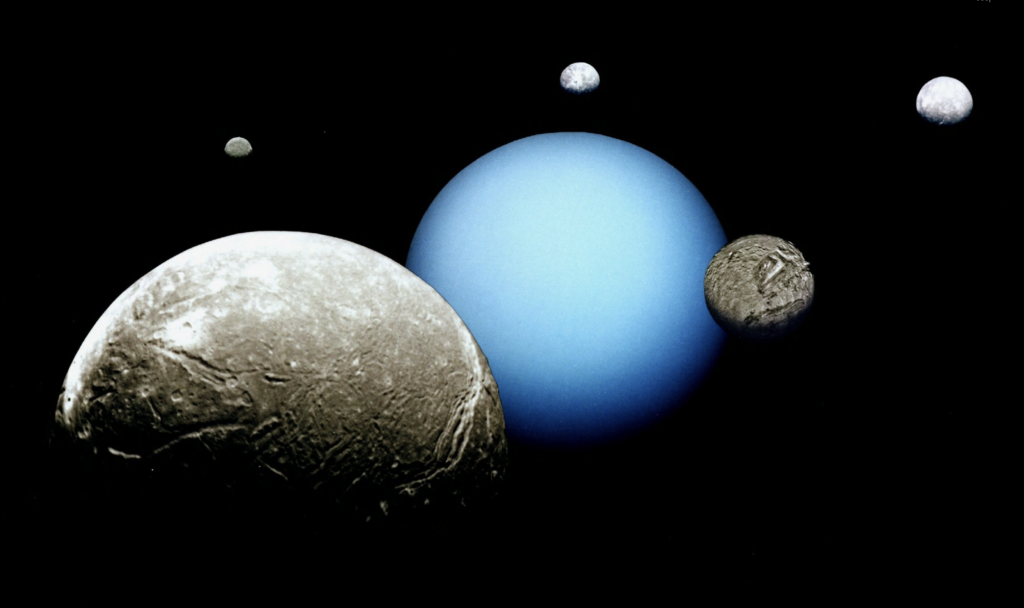
Table of Contents
Uranus, the seventh planet from the sun, has twenty-seven moons. Uranus, and its moons, are among the least explored in the solar system. When asking the question how many moons does Uranus have, it’s important to put them into groups. Uranus moons fall into three identification groups; inner, major, and irregular moons.
In 1986 Voyager 2 flew by Uranus and Neptune as it headed toward interstellar space. During its brief flyby, Voyager 2 discovered ten new moons, a magnetic ring, and two new debris rings.
Why Don’t We Know Much About Uranus’ Moons?
Uranus is one of the most distant planets in our solar system. Uranus isn’t a close next-door neighbor located 1.6 billion miles ( 3.2 billion km).
The historical lack of interest in Uranus explorations is due to several factors.
- Distance: A spacecraft will take approximately 15 years to reach Uranus.
- Energy: Sunlight is so faint that it renders solar power via solar panels ineffective. A nuclear power supply is mandatory.
- How would mission control (NASA, JAXA, ESA) communicate with the spacecraft? These are extreme distances! What kind of hardware is required for communication between the spacecraft and Earth?
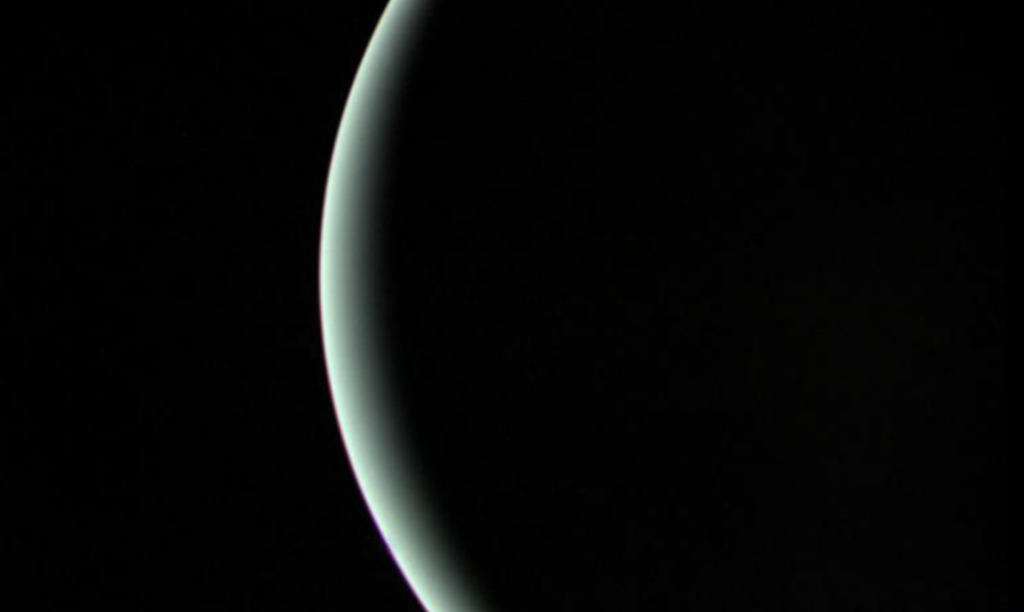
Uranus Discovery
Uranus is challenging to detect with the naked eye. The planets Mercury, Venus, Mars, Jupiter, or Saturn are easy to see with the naked eye.
There’s intense debate about if Hipparchos discovered the planet in 128 BC. The object was detected and documented in 1690 and between 1750 and 1769.
Who Discovered Uranus?
British astronomer William Herschel wanted to study distant celestial bodies. Herschel lacked a telescope with enough light-gathering capabilities. He believed that he needed a reflecting telescope with a larger collection mirror.
Herschel was unable to locate a cost-effective telescope to meet his needs. Herschel opted to design and manufacture the lens himself. Herschel invented and manufactured his magnification eyepiece (6,400X) too!
Herschel’s training as a musician demonstrates itself in the telescope’s configuration. Conventional thinking called for brass to hold the lens in the eyepiece. Herschel utilized tropical hardwood.
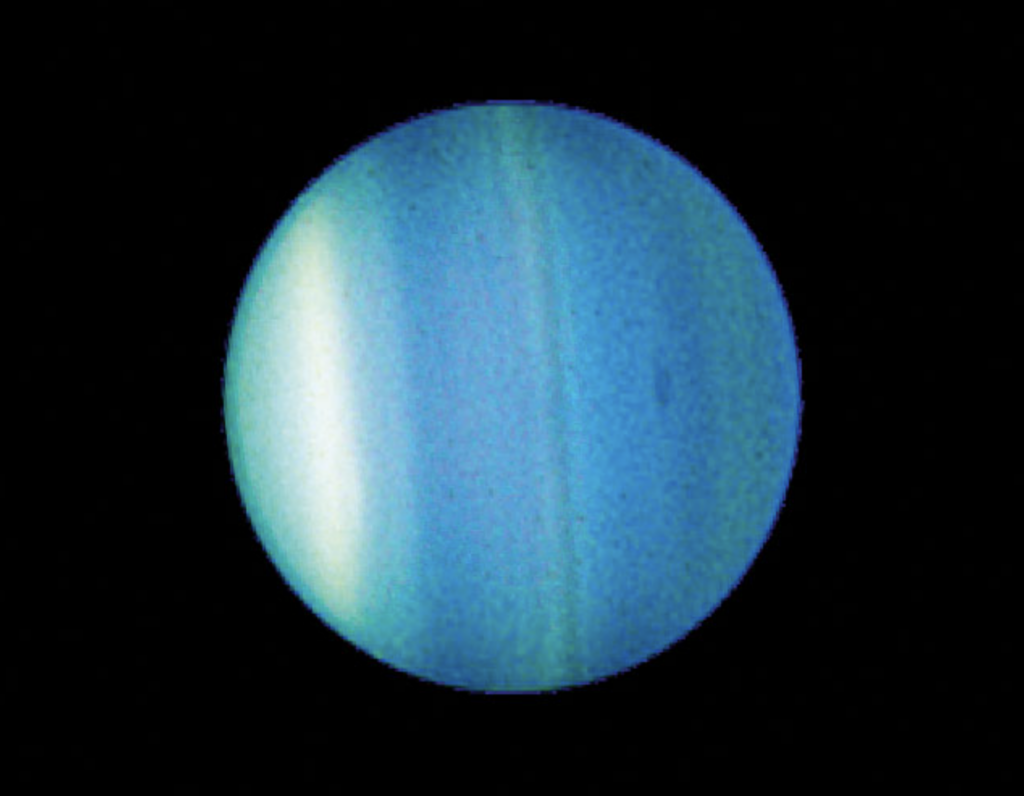
When was Uranus Discovered?
Herschel spent several years systematically exploring the night skies looking for “new” objects. In 1781 Herschel discovered Uranus.
Herschel thought he had found a comet. Other astronomers confirmed that it was a planet. The discovery of Uranus was the first planetary discovery since prehistoric times.
Herschel wanted to name the planet after King George III. Other astronomers wished to name the world after Herschel. Ultimately the planet was named Uranus based on the Greek God of the sky, Ouranos. All other planets in our solar system are named after Roman Gods.
Fun fact: Hold your arm to shoulder height and make a fist. The size of your fist is approximately the size of the Earth. If you held a basketball behind your fist, you’d have an approximate size representation between Earth and Uranus.
Uranus Moon Discovery
- Herschel discovered two Uranus moons in 1787. The names Oberron and Titania are based on characters in William Shakespeare’s Midsummer Night’s Dream.
- William Lassel discovered two more moons, Ariel and Umbriel, in 1851.
- Gerard Kuiper discovered Miranda in 1948.
- Voyager 2 discovered ten extra moons in 1986
- The Hubble Space Telescope and ground-based telescopes discovered an additional twelve moons in the 2000s.
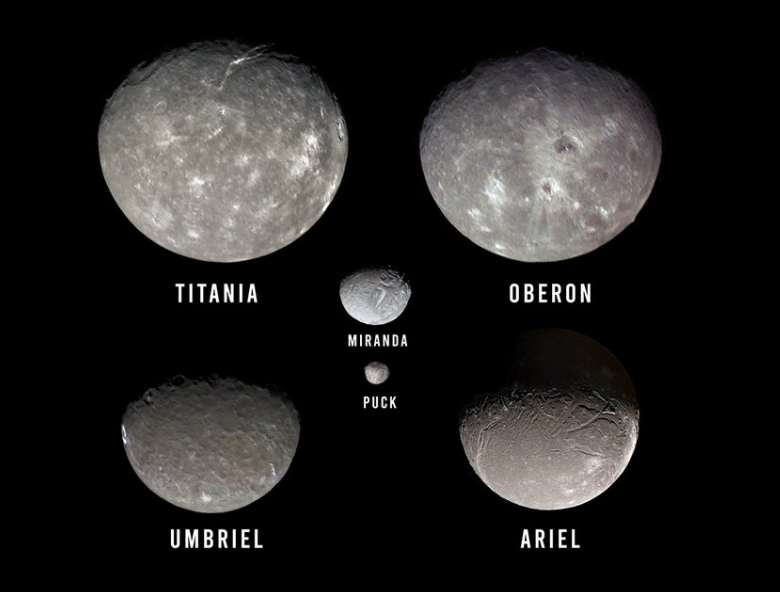
Uranus Moon Categories
Uranus moons fall into three categories
- Inner Moons: Small moons most likely created from the same material that formed Uranus.
- Thirteen moons; Cordelia, Ophelia, Bianca, Cressida, Desdemona, Juliet, Portia, Rosalind, Belinda, Puck, Mab, and Cupid.
- Connected with rings around Uranus. The moons may have provided the ring materials.
- Unstable orbits. The moons may collide with each other again in the future. The moons colliding with each other in the past may have created the rings.
- Irregular: Small, irregularly shaped moons with unstable orbits
- Nine moons are believed to have been captured by Uranus’ gravity soon after the formation of Uranus.
- Eight of nine moons orbit Uranus in the opposite direction of Uranus’ rotation (retrograde orbit.)
- Subjected to chaotic instability, some of the moons may leave Uranus’ orbit or collide with other Inner Moons.
- 20km to 200km in diameter
- Outer/Major: More distant from Uranus and more significant than the Inner or Irregular moons. Ariel, Umbriel, Titania, and Oberon.
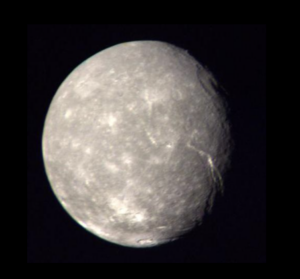
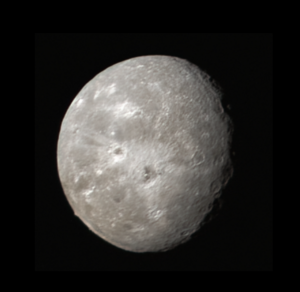
Major Moons
How many moons does Uranus have? Similar to it’s neighbor Neptune, Uranus has many moons. While Uranus has twenty-seven moons, most emphasis is directed toward the five major moons; Ariel, Umbriel, Titania, Miranda, and Oberon. The smaller moons are extremely difficult to detect from Earth.
Insider tip: In the proper observation conditions, 8″ reflective backyard telescopes can view both Titania and Oberon.
| Name | Discovered | Compared to Earth moon | Composition | Diameter (km)/(miles) | Notable |
| Titania | 1787 | 2.2X Smaller | Water Ice/Silicate rock | 1,578/981 | Tectonic Activity |
| Oberon | 1787 | 2.3X Smaller | Water Ice/Silicate rock | 1,523/946 | Heavily cratered |
| Umbriel | 1851 | 3X Smaller | Water Ice/Rocky material/Frozen Methane | 1,169/726 | Dark surface |
| Ariel | 1851 | 3X Smaller | Water Ice/Silicate rock | 1,158/720 | Youngest Surface |
| Miranda | 1948 | 7.4X Smaller | Water Ice/Rocky material | 472/293 | Different terrains |
- Titania
- The largest moon of Uranus. The 8th largest moon in the solar system.
- Voyager 2 images indicate:
- Geologically active with a 1,000 mile (1,600 km) fault valley
- Tectonic extensions are seen through crust fracture
- Frost on sun-facing valley floors
- Neutral grey color
- Oberon
- 2nd Largest moon of Uranus.
- Outmost of the five moons
- Voyager 2 images indicate the surface is:
- Heavily cratered
- One large mountain is approximately the height of Mt. Denali (20,000 ft/6000m)
- Umbriel
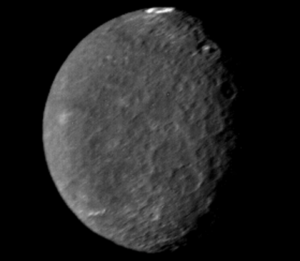
- The darkest surface of the major moons. The theoretical root cause is charged particles interacting with methane deposits in the surface water ice. The result is a dark carbon-rich residue that doesn’t reflect light very well.
- Old, large craters
- Bright ring on one side of the moon. The ring may be connected with frost rings created during the impact of an asteroid.
- Ariel
- The surface is the youngest of all Uranus moons
- The brightest surface of all five major Uranus moons
- Large and small craters erased signs of previous more significant impacts
- The porous surface reflects light better than other moons
- Miranda
- Fault canyons that are twelve times deeper than the Grand Canyon
- An unusual and varied landscape that’s different from other Uranus moons
- The surface shows signs of heat melting the moon’s interior.
- Scientists believe that Miranda was “cold” and “inactive’ after its formation, so the presence of heat is surprising. Tidal heating is a leading candidate.
Exploration Ahead
In 2022 the US National Academy of Sciences published its decadal report. The report urges NASA to consider a Uranus mission as the highest-level mission for the next decade.
Scientists have long dismissed Uranus and Neptune as not-so-interesting ice giants to visit. Recent discoveries reveal an abundance of other worlds, just like Uranus. A focused study on Uranus equates to learning about other ice giants in our galaxy.
Conclusion
A discussion concerning “how many moons does Uranus have” will invariably turn into a conversation about how much we don’t know about Uranus. Voyager 2 provided the bulk of our learning about Uranus and the moons of Uranus in the 1980’s.
Further exploration of Uranus and its moons will provide answers to the formation of our solar system.
Uranus, the seventh planet from the sun, has twenty-seven moons. Uranus, and its moons, are among the least explored in the solar system. Uranus moons fall into three identification groups; inner, major, and irregular moons.
In 1986 Voyager 2 flew by Uranus and Neptune as it headed toward interstellar space. During its brief flyby, Voyager 2 discovered ten new moons, a magnetic ring, and two new debris rings.
